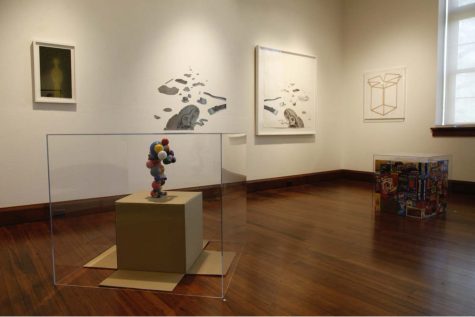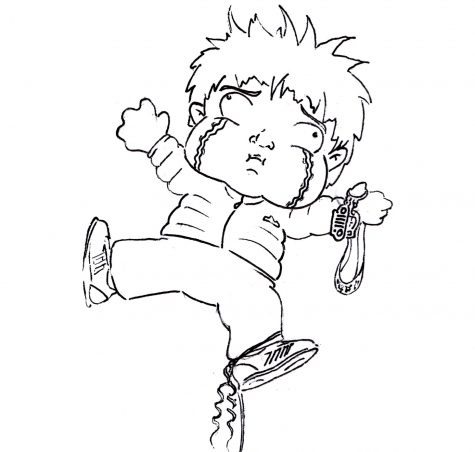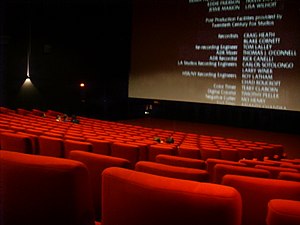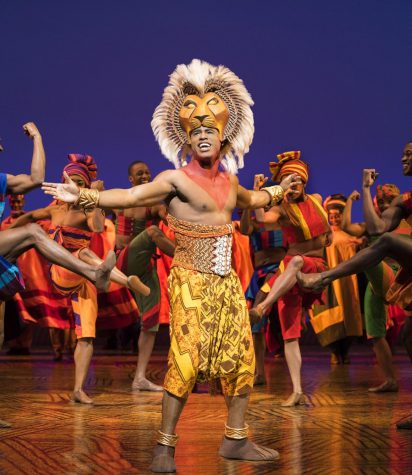The Skin of Our Teeth
November 16, 2017
“I promptly tucked my arms back into the sleeves of my shirt and began squawking like a T-Rex. I nuzzled everyone on stage, pranced around on my hind legs, and even chased an imaginary bone,” Jack Case ‘18 describes of his callback audition for this fall’s high school production.
The two shows of Skin of Our Teeth were on Thursday, October 20th, and Friday, October 21st, at 7:30 pm. The Skin of Our Teeth is a play within a play. Multiple times throughout the play, Claire Harkins ‘21 and Phoebe Sklansky ‘18, the production’s stage managers, remind Kaitlyn Wallace ‘18, playing Sabina, to stay in character. Sabina continuously breaks the fourth wall to complain about the play or refuse to act certain scenes.
The inner storyline follows the Antrobus family, who lives in suburban New Jersey on the dawn of an Ice Age. George Antrobus, played by Collin Smith ‘18, comes home to greet the family while whistling “I’ve Been Working on the Railroad.” A classic “Honey, I’m home!” interaction occurs while the pet dinosaur, played by Case, warms by the fire.
In the first act, the family takes in refugees, including Moses, Homer, and the Muses, allegorically saving the human race.
The second act takes place on the Atlantic City boardwalk, where Mr. Antrobus has been named president of the Ancient and Honorable Order of Mammals, Human Subdivision.
The first two acts make use of the 26 member cast, with multiple musical numbers with live instrumentation, including an eerie rendition of Jingle Bells as Ice Age comes in and a Beatles number on the boardwalk.
In the third and final act, George and his son Henry, played by Evan Williams ‘18, return from a war in which father and son fought on opposing sides. The audience first hears Mr. Antrobus whistling the same tune from the first act, which created an unsettling change in tone.
The family discusses the essence of humanity: perseverance. Meanwhile, the “production company” experiences a lack of actors due to illness as well as various technical difficulties, while nevertheless, the show goes on.
The character development and portrayal of the Antrobus family is noteworthy. Henry, the violent schoolboy, brings most of the one-liners of the tragicomedy home with his timing. When his mother asks if he hurt anyone at school today, the audience hears a quiet “no” five seconds later. However, Henry doesn’t solely provide comedic relief. When Williams ‘18 breaks character to explain why he gets so violent in one part of the play, he says “it’s almost as if you have to kill a man to keep from killing yourself.”
Mrs. Maggie Antrobus, played by Victoria Sansone ‘18, is passionate about the sanctity of family to the point that she’s controlling, at one point forcefully smearing off the lipstick her daughter Gladys, played by Kelly Saschl ‘18. Gladys is a thoroughly innocent girl but longs to be mature. At the end of the day, Maggie’s one goal is preventing George’s frequent mood swings. Combined, the personalities of the Antrobus family comprise a metaphor for the heart of humanity.
When Thornton Wilder wrote the play Skin of Our Teeth, “he thought the play would work best in times of strife or distress, and I think that describes where we are today,” says Drew Battles, director of the fall production. Battles chose Skin of Our Teeth because he felt a duty, “as an artist…to do something resonant, but I wanted to choose something that wasn’t overtly political.”
Skin of Our Teeth deals with climate change, refugees, a world ending hurricane, and a brutal war. As Battles put it, “This could’ve been written yesterday.”
While Skin of Our Teeth was written shortly after Pearl Harbor in 1942, Battles and many critics believe themes of grit through times of adversity will always be resonant, effectively creating a timeless play.
Delivering such a powerful play doesn’t come without difficulties in the production process. Battles says, “the challenge is that every act is sort of wildly different in style. Getting the actors to figure what play they’re living in based on what act they’re in, and also design wise and tech wise, what can we do to show that the mood is different?”
The show used projections on set to help portray mood and theme. Jack Case ‘19 was also the show’s light and sound designer, and Battles told him to “go wild, and we’ll see what sticks.”
The three projection screens used showed images of Syrian, Rohingya, and Central American refugees as well as hurricane damage in Houston, Florida, and Puerto Rico. In the transition from the hurricane of Act II to the war of Act 3, a remix of “Rain” by the Beatles faded into an air raid siren and bombs dropping, and then subsided to a bugle call. Meanwhile, footage of the atomic bomb and images of modern warfare covered the projectors.
While Student Body President Abdullah Brown-El mentioned Macbeth in Haertter Hall on Opening Day despite a longstanding theatre taboo, Hurwitz reported that “no one’s died yet, so I’d guess it’s probably fine.” Indeed, Skin of Our Teeth was more than fine. The play, that constantly pulls the audience into and out of different levels of reality, was executed well by talented actors and a skilled crew. The effect: an audience left wondering what the future stores for mankind.







